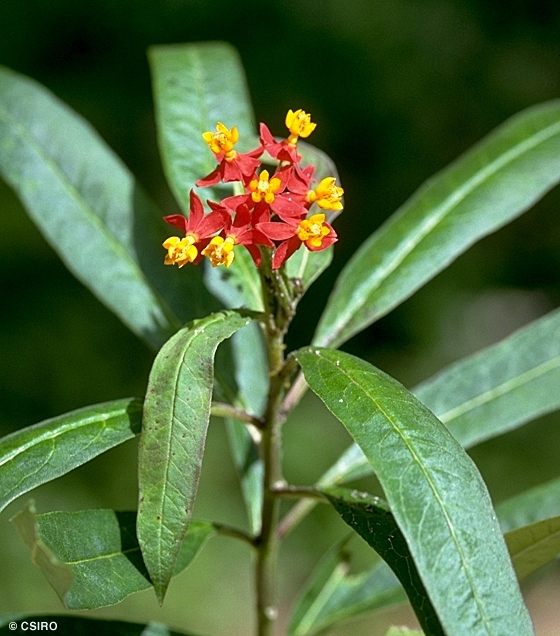Australian Tropical Rainforest Plants - Online edition
Asclepias curassavica L.




Linnaeus, C. von (1753) Species Plantarum 2: 215. Type: curassavica 9; lecto: LINN 310.18, fide D. O. Wijnands, Bot. Commelins 48 (1983).
Red Head Cotton Bush; Red Cotton; False Ipecac; Cotton Bush; West Indian Ipecacuana; Bastard Ipecacuana; Red Head; Wild Ipecac; Bloodflower; Bloodflower Milkweed
Usually flowers and fruits as a single-stemmed shrub about 1 m tall but also flowers when smaller.
Calyx persistent at the base of the fruit. Seeds immersed in fine silky hairs which are loosely attached as a clump to one end of the seed. Seeds with a narrow wing completely encircling the margin. Cotyledons wider than the radicle.
An introduced species originally from Mexico, now naturalised in NEQ and in south eastern Queensland and north eastern New South Wales. Altitudinal range in NEQ uncertain but collected at 900-960 m. In NEQ usually found on rain forest margins. Also naturalised in New Guinea and other parts of Malesia.
A poisonous plant causing death in sheep and cattle. Unpalatable and only eaten in time of scarcity. Everist (1974)
A food plant of the larval stages of the Lesser Wanderer and Wanderer Butterflies. Common & Waterhouse (1981).
Although proven poisonous to livestock, the bush has a reputation in popular medicine.
The bush is not native, but nevertheless entered into use amongst the Aborigines both as a fish poison and as a love charm. Cribb (1981).





